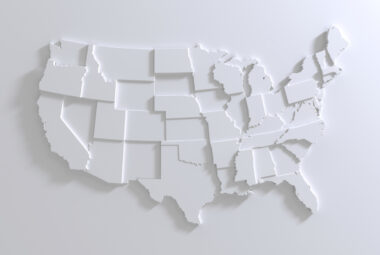
How innovation will inject oxygen into the consumer tech market
If customers are holding onto their tech for longer, how are tech companies planning to make money in the future?
How long have you had your phone? One? Two? Four years? Whatever the answer is, it is probably longer than it would have been a few years ago.
It is evident that people are holding onto their tech for longer. In a recent interview, the Chair of Verizon Hans Vestberg recalled the “exciting” times of 10 years ago when people would upgrade their phones almost yearly, remarking that “the resilience and the quality of the phones has improved quite dramatically over the last five to 10 years, so people can keep them much longer”. The dramatic innovation we have seen in those 10 years had led to a stagnant market in the present day, with consumers feeling little motivation to upgrade. As of 2023, US consumers wait an average of 2.67 years before upgrading their phone. This time period is predicated to increase to 2.93 years by 2027. With big players such as Apple and Samsung feeling the pressure, how are tech companies planning to respond to this maturing market?
One key area where companies are looking to diversify is the service industry. Apple’s service group spans a surprisingly broad range of industries and is split into five main classifications: advertising, AppleCare, cloud services, digital content (Apple Arcade, Apple Fitness, Apple Music, Apple News+, and Apple TV+) and payment services (Apple Card and Apple Pay). Together this group accounted for net sales of $96.2 billion for the 2024 financial year, a 13% growth from the previous year. Compared to Apple’s physical products, their service sector has higher profit margins because there are fewer overheads involved, and the sector does not suffer from supply chain issues that can impact the manufacturing of physical products (especially in light of COVID). This results in a dependable income stream that the consumer will continue to pay into long after the purchase of their device.
The wearables market is also going from strength to strength. The value of the global wearable technology market has increased from $120 billion in 2023 to over $157 billion in 2024, and is predicted to exceed $1,695 billion by 2032. A significant contributor to the industry’s growth has been the rise of the digital health market and the wellness industry as a whole. A recent analysis of the wearable technology market found that heightened consumer awareness of health and fitness issues has bolstered the industry’s growth. The COVID-19 pandemic left its impact on consumers, and companies are now responding by implementing more health oriented features in their wearables. Modern smartwatches are being launched with pulse oximeters, heart rate and skin temperatures monitors, and other features such as ECG measurement capabilities. This data can be provided to doctors in real time to improve diagnosis and monitoring of conditions. Additionally, miniaturisation of technology has paved the way for more discreet health tracking wearables such as Whoop and the Oura Ring. These devices are designed to passively collect data and monitor a wearer whilst requiring minimum interaction from the user.
Another crucial area of investment for tech companies is the Augmented Reality (AR)/Virtual Reality (VR) space. In 2014 Google launched their augmented reality smart glasses (Google Glass) which overlaid a digital interface on top of a user’s field of view. This product was removed from sale in 2015, and, despite a relaunch in 2019, never managed to capture the interest of the public. The main reasons for failure were a lack of functionality and high cost. Convincing a consumer to significantly alter their habits by wearing a computer in front of their face requires considerable incentive. Many users reported that the limited feature set on offer at the time simply did not justify the cost or inconvenience of wearing the device. Moreover, the integrated camera sparked a privacy row that resulted in some users being barred from certain bars and restaurants.
Fast forward today and the AR/VR industry is expanding rapidly. It is still hard to envisage a world where this technology is widely adopted, but many predict that this will come sooner than we think. In the last four years Meta has sunk about $50 billion of investment into its Reality Labs division (its research division tasked with developing AR and VR related products). That’s roughly equivalent to the GDP of Tunisia. PwC, JP Morgan, HSBC and Samsung have already invested in ‘real estate’ in the metaverse. These companies claim that mixed reality (a blending of the physical and digital worlds) will cause the next great tectonic shift in society, being as influential as the dawn of the internet itself. They believe that we will progressively use the metaverse more and more for work, education and recreation, to the point where every aspect of our lives in the real world will have a ‘digital twin’.
The expansion of the AR/VR industries is also reflected in patent filings. For example, prior to launch Apple filed over 5000 patent applications for technologies related to its Vision Pro. These include applications for physical aspects of the device such as the display and lenses, and also software related technologies such as eye detection methods and anti-motion sickness technology.
Despite the growth of some more conventional product categories slowing down, it is clear that there is lots of room for expansion in others. Ultimately, consumers spent money upgrading their phones and laptops in the past because there was some perceived added value compared to what came before. It is up to tech companies to convince consumers that the same is true of these emerging product categories.
There are similar challenges to overcome for patenting inventions in the AR/VR space as any other computer program related invention. Many jurisdictions (including the UKIPO and the EPO) employ eligibility criteria for computing and software related inventions. For example, the EPO requires that the computer program in question must produce a “further technical effect” when run on a computer that goes beyond the normal interactions between the software and hardware of the computer. If you would like any further guidance, Barker Brettell has a dedicated Computing & Software team with a wealth of experience in dealing with computer-implemented inventions who would be more than happy to assist you.



